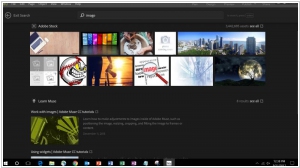Adobe Muse vs WordPress
June 10, 2023 | Author: Michael Stromann
49

WordPress is web software you can use to create a beautiful website or blog. We like to say that WordPress is both free and priceless at the same time. The core software is built by hundreds of community volunteers, and when you’re ready for more there are thousands of plugins and themes available to transform your site into almost anything you can imagine.
Adobe Muse and WordPress are both popular platforms for creating websites, but they have significant differences in terms of their features, flexibility, and target audience. Adobe Muse is a visual website builder that allows users to design websites without writing code. It offers a drag-and-drop interface, pre-designed templates, and the ability to create custom designs. Muse is known for its design-centric approach, making it a good choice for graphic designers and creatives who prioritize visual aesthetics. However, Adobe Muse has been discontinued by Adobe, and no further updates or support are provided.
WordPress, on the other hand, is a versatile content management system (CMS) that powers a significant portion of the internet. It offers extensive customization options, a vast library of themes and plugins, and a robust ecosystem of developers and resources. WordPress is highly flexible, allowing users to create various types of websites, from blogs to e-commerce stores and enterprise-level sites. It also provides the ability to extend functionality through coding and development. WordPress is suitable for users of all skill levels, from beginners to experienced developers.
See also: Top 10 IDE Software
WordPress, on the other hand, is a versatile content management system (CMS) that powers a significant portion of the internet. It offers extensive customization options, a vast library of themes and plugins, and a robust ecosystem of developers and resources. WordPress is highly flexible, allowing users to create various types of websites, from blogs to e-commerce stores and enterprise-level sites. It also provides the ability to extend functionality through coding and development. WordPress is suitable for users of all skill levels, from beginners to experienced developers.
See also: Top 10 IDE Software
Adobe Muse vs WordPress in our news:
2023. Automattic launches an AI writing assistant for WordPress
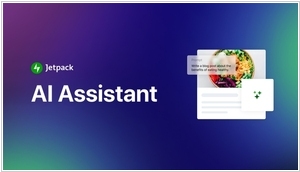
Automattic has introduced an AI assistant for the widely used content management system Wordpress.com. Now, when composing a post or page, users have the option to incorporate an "AI Assistant" block into their content. By inputting prompts in natural language, users can avail themselves of the AI assistant's text generation capabilities. Beyond providing content suggestions, the AI assistant can facilitate the creation of organized lists and tables within blog posts. Additionally, it has the ability to adjust the tone of a post, adding elements of informality, skepticism, humor, confidence, or empathy. The assistant can also generate post summaries and propose suitable titles. Initially, the Jetpack AI Assistant block offers a complimentary trial allowing users to submit 20 requests. Subsequently, a subscription fee of $10 per month is required to access this feature.
2021. Automattic acquires analytics company Parse.ly
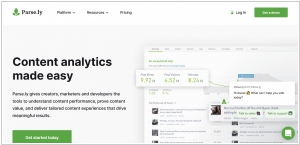
Automattic, the profit-making company associated with the open-source web publishing platform WordPress, has recently completed the acquisition of the analytics provider Parse.ly. Parse.ly equips creators, marketers, and developers with tools to gain insights into content performance, demonstrate its value, and deliver personalized content experiences that yield meaningful outcomes. While WordPress and Parse.ly already exhibit compatibility, the objective is to enable Parse.ly customers to access WPVIP features (enterprise hosting and support for publishers) and enhance the availability of Parse.ly data to WPVIP publishers. Additionally, there exists potential to incorporate more commerce-related data into Parse.ly, considering Automattic's ownership of WooCommerce.
2016. WordPress.com turned on HTTPS encryption for all sites
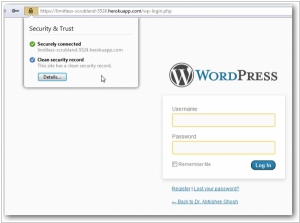
WordPress.com is implementing automatic HTTPS support for all its sites, requiring no user action. Each website is now equipped with an SSL certificate, which is indicated by a green lock in the address bar. Besides the heightened security, this improvement has the added benefit of Google's preference for HTTPS-supported websites over those limited to HTTP. Consequently, your WordPress.com website is expected to achieve higher rankings in Google search results.
2015. WordPress.com goes Open Source and gets a desktop app

The fully hosted version of WordPress, known as WordPress.com, has recently undergone a significant update. The first major change is the complete separation of WordPress.com from the WordPress core. It now functions as an admin interface that interacts with the WordPress core similar to other third-party interfaces and apps. This is achieved through the utilization of a REST API, enabling tasks such as fetching posts, publishing new content, and uploading photos. Secondly, the WordPress.com development team has transitioned to an entirely new stack. Instead of relying on PHP and MySQL, they have built the platform using JavaScript and API calls. Consequently, when accessing the website, the server distributes a fully functional WordPress client that primarily runs within the user's browser. Lastly, the entire system is open source and hosted on GitHub. Additionally, a new Mac app is available for download, offering an alternative way to access WordPress.com. Similar to the Slack desktop app, it harnesses web technologies and desktop features to provide users with a comparable experience to the WordPress.com website, along with extra features like notifications. Windows and Linux apps are currently in progress and will be released in the future.
2015. WordPress acquired e-commerce plugin WooCommerce

Automattic, the company responsible for WordPress, has made an acquisition by acquiring WooCommerce, the developer of a highly popular e-commerce WordPress plugin. This plugin enables website owners to effortlessly transform their self-hosted WordPress sites into fully functional online stores. With a staggering presence in the online store landscape, WooCommerce powers a substantial number of over 650,000 online stores. While WooCommerce offers user-friendly features, especially compared to other e-commerce solutions, it still requires some assistance during the initial setup process. The demand for easy-to-use shopping solutions is increasingly becoming a key selling point for web-based platforms. Competitors of WordPress.com, such as Squarespace, have integrated storefront modules, and other companies like Shopify, Big Cartel, and Bigcommerce offer hosted solutions to cater to this growing market.
2014. WordPress, Squarespace offer website CMS for Google Apps customers

Website CMS providers, WordPress and Squarespace, have recently become part of the Google for Work Partner Program, offering users access to two highly flexible content management systems (CMS) tailored for small businesses. The Google for Work Partner Program already includes website building services such as Wix, Weebly, and Bluehost. The program's core services encompass popular tools like Gmail, Hangouts, Calendar, Google+, Drive, Docs, Sheets, Forms, Slides, Sites, Admin, and Vault. The integration of Squarespace and WordPress with Google for Work provides users with user-friendly content management solutions, efficiently addressing their daily requirements. Furthermore, the integration process with these platforms is made simple through the availability of APIs, enabling seamless incorporation of Google Apps into their interfaces.
2014. Microsoft makes scaling WordPress on Azure easier
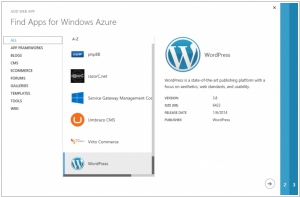
WordPress is widely recognized as one of the leading web content management systems for the Enterprise. However, when it comes to scaling up for high-traffic websites, it can pose challenges. To address this, Microsoft has been providing the option to effortlessly establish a WordPress site using Azure Websites. Now, Microsoft takes it a step further by introducing a highly scalable solution. Azure users can navigate to Azure's App Gallery and deploy what Microsoft refers to as "Scalable WordPress." This process involves a few simple clicks, setting up Azure Storage to store all media assets, and granting access to a curated collection of performance-optimized WordPress plugins. Unlike the standard WordPress installations on Azure, this solution utilizes a higher-end (and pricier) MySQL database. WP Engine and Pantheon are among the recent entrants in offering specialized WordPress hosting services. Unlike Azure, these platforms provide a fully managed service. Nonetheless, Microsoft aims to attract businesses that are capable and willing to manage their own WordPress installations by simplifying the setup of a scalable version on its platform.
2014. Adobe Muse simplified professional website creation

Muse is a recent addition to Adobe's Creative Cloud suite of tools, offering a simplified web design experience even for non-professional graphic designers and developers. Its effectiveness in achieving this goal has been a subject of debate. Despite being relatively new, Adobe has consistently released major updates approximately every three months, resulting in significant advancements in features and performance within a relatively short timeframe. Of course, there are numerous other web design platforms available, with Weebly being one notable example. The key distinction lies in the pricing model: Weebly can be used for free, whereas Adobe Muse is exclusively accessible through the Adobe Creative Cloud subscription. However, it is important to note that Weebly does have fees associated with more advanced websites that incorporate multimedia elements or require e-commerce functionalities, thus leveling the playing field in terms of costs.
2013. Adobe updates Muse

Adobe has recently unveiled an exciting update for its website design application, Muse. The application can now be obtained as a standalone option for non-Creative Cloud subscribers, priced at $14.99 per month for an annual plan or $24.99 on a month-to-month basis. The update introduces a valuable feature that enables users to publish their websites to a subdirectory on their FTP server or through Business Catalyst, facilitating more convenient site management. Creative Cloud subscribers enjoy the advantage of hosting up to five sites on Catalyst, while standalone Muse purchasers are entitled to one site. Furthermore, the Muse team has made significant improvements to the performance of websites built using the tool, ensuring compatibility with all widely used web browsers. They have also leveraged advanced techniques such as CSS3 whenever they are available, enhancing the overall browsing experience.
2011. Adobe launched website building tool Muse

Adobe has recently unveiled Muse, its latest product designed to streamline website design for traditional medium designers transitioning into web-based projects. Muse is a visually-oriented tool that empowers designers to create websites without having to delve into coding languages such as HTML, CSS, or Javascript. This feature serves as Muse's main selling point, as it eliminates the need for coding knowledge when designing for the web. In contrast, Adobe's Dreamweaver, another website builder, offers more advanced functionality by enabling users to create website elements through code manipulation. However, this requires coding expertise. Muse, on the other hand, is specifically tailored to be user-friendly and can be utilized by individuals with no programming background or by those familiar with basic web design principles. Its simplified approach allows for satisfactory results, making it highly effective for approximately 90% of users. Both Muse and Dreamweaver come equipped with an integrated FTP manager, facilitating the seamless uploading of completed websites to hosting services.

